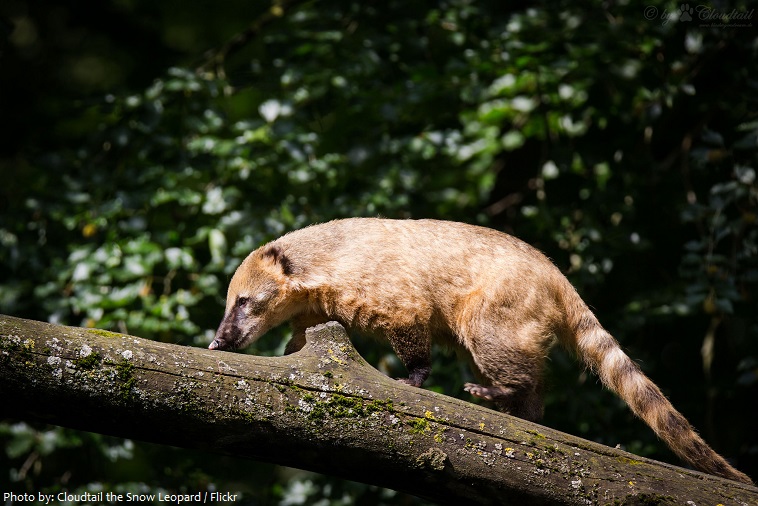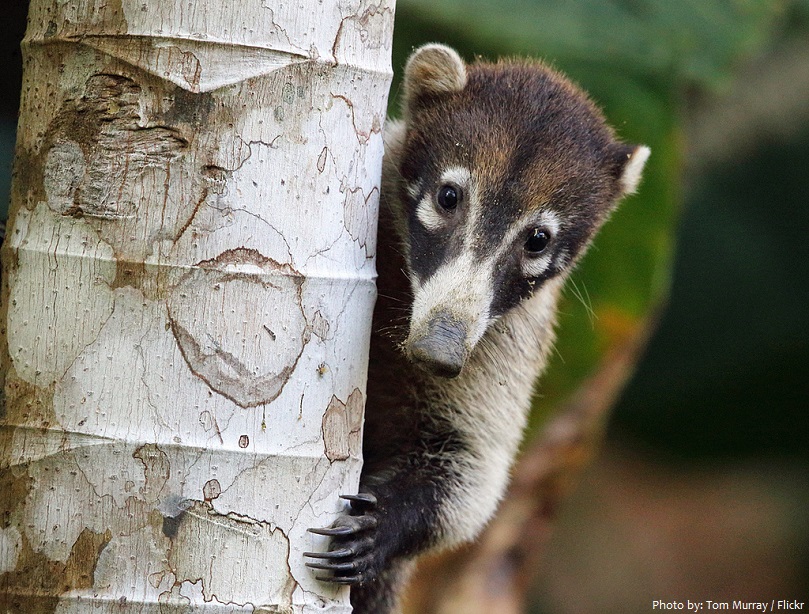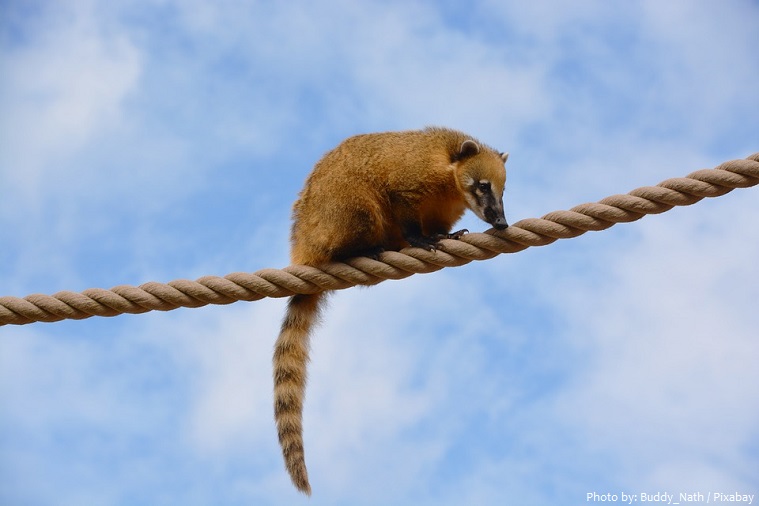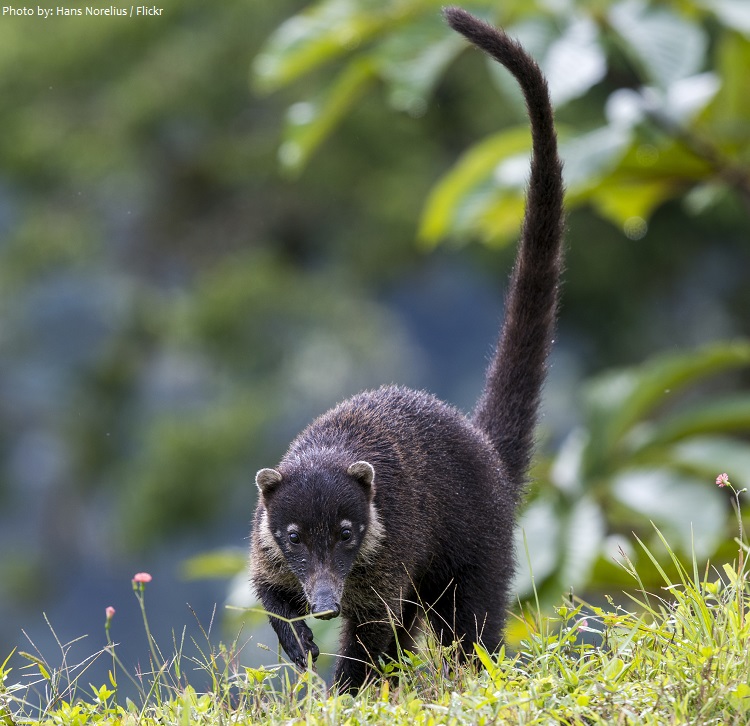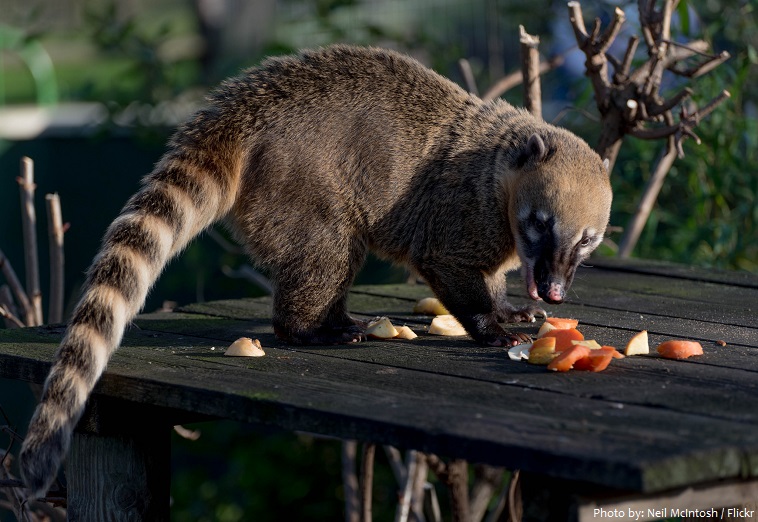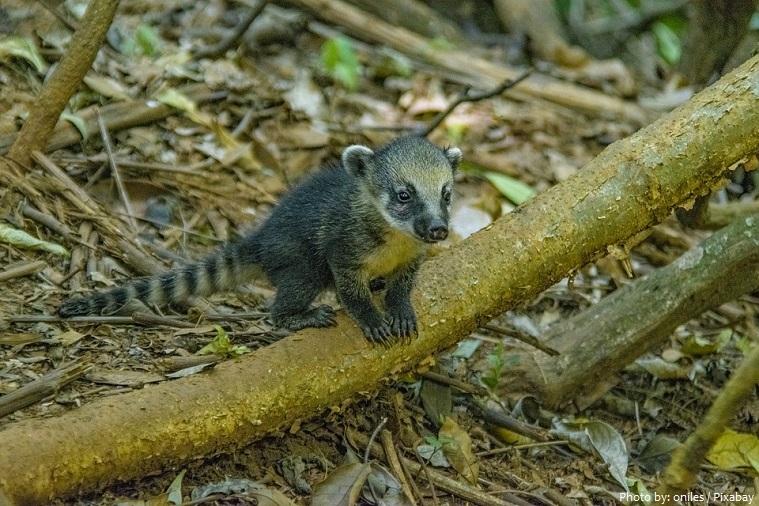Coatis also called coatimundis are members of the raccoon family (Procyonidae) in the genera Nasua and Nasuella.
They are found in wooded regions from the southwestern United States through South America.
There are 4 species of coatis:
• the mountain coati (Nasuella olivacea) is found in the Andes of western Venezuela, Colombia, and Ecuador
• the eastern mountain coati or eastern dwarf coati (Nasuella meridensis) is found in the Andes of western Venezuela.
• the white-nosed coati (Nasua narica) is found from southeastern Arizona through Mexico and Central America and into western Colombia and Ecuador.
• the South American coati (Nasua nasua) found in tropical regions of South America, from Colombia and Venezuela to Uruguay, northern parts of Argentina, and into Ecuador.
The lifespan of the coatis is about 7 years in the wild and up to 16 years in captivity.
The coati has a long, flexible snout and a slender, darkly banded tail that it often carries erect as it moves about. It has coarse fur that is gray to reddish or brown, sometimes close to black with lighter underparts and light facial markings.
The male coati measures about 73 to 136 centimeters (29 to 54 inches) in length—half of which is tail—and weighs roughly 4.5 to 11 kilograms (10 to 24 pounds). The female is somewhat smaller.
Coatis are diurnal animals meaning they are most active during the day.
They prefer to sleep or rest in elevated places and niches, like the rainforest canopy, in crudely built sleeping nests.
Like their raccoon relatives, they are curious and resourceful creatures and are very good climbers.
They usually carry their tails erect when they walk with their bear-like gait.
Their front feet have long, blunt, and slightly curved claws, whereas the back feet have shorter claws. They have webbing between their toes making them powerful swimmers.
Coatis are intelligent and highly adaptable animals. They climb and forage both in trees and on the ground.
Coatis are omnivores, with a highly varied diet of small vertebrate prey (lizards, rodents, birds, bird eggs, and crocodile eggs), ground-litter invertebrates, and fruit.
They have a great sense of smell, and they use their snouts to root the ground in a pig-like manner to unearth invertebrates. They also dig up food with their powerful paws and claws. They travel about 1.5 kilometers (1 mile) each day foraging for food.
Coatis are highly gregarious and have a wide range of social behavior, including cooperative grooming, nursing, vigilance, and evident defensive behavior. Bands are usually slightly antagonistic to other bands when they meet. However, peaceful interactions also occur, and are occasionally characterized by intergroup grooming sessions.
The females live in groups of 4 to 24 individuals called bands. Males join bands only during the mating season.
During the breeding season, an adult male is accepted into the band of females and juveniles near the beginning of the breeding season, leading to a polygynous mating system.
The pregnant females separate from the group, build a nest on a tree or in a rocky niche and, after a gestation period of about 11 weeks, give birth to litters of three to seven kits. About six weeks after birth, the females and their young will rejoin the band.
Coati predators include jaguarundis, boa constrictors, foxes, dogs, tayras, ocelots, and jaguars. Large raptors, such as ornate hawk-eagles, black-and-chestnut eagles, and harpy eagles, also are known to hunt them.
Coatis face unregulated hunting and the serious threat of environmental destruction in Central and South America.
The coati is also known in English as the hog-nosed coon.
